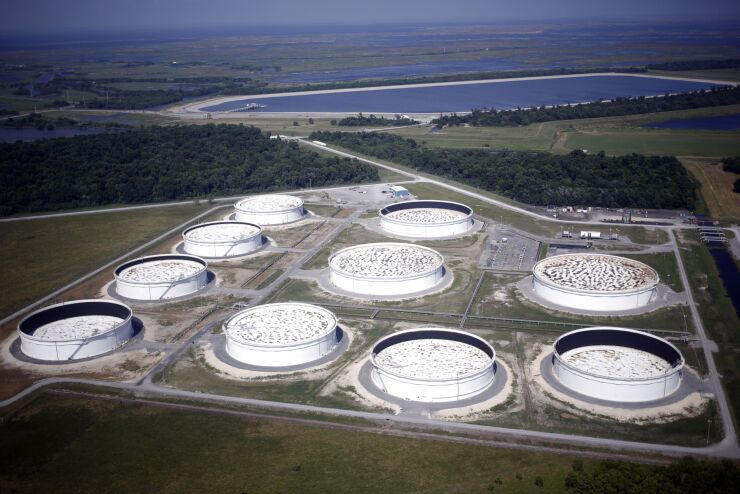The collapse of oil prices will inflict “considerable strain” on the economies of oil-producing states, according to S&P Global Ratings, though no outlook changes are in effect.
“While shock declines in commodity prices are not new, the timing of this latest rout has potential to upend recent fiscal and economic improvement,” S&P analysts led by Timothy Little wrote in a Wednesday report.

“It was not until last year -— nearly five years after the last price rout — that S&P Global Ratings observed all oil-producing states having positive economic growth,” he wrote.
“Any sharp pull-back in exploration and production is likely to inflict considerable strain on the economies of oil-producing states, particularly those that lack diversification,” Little wrote. “Should those states slip back into an economic recession, the three hardest-hit employment sectors will likely be construction, natural resources, and mining; manufacturing; and trade, transportation, and utilities.”
After hovering in the $50 to $55 per barrel range for most of the year, prices of West Texas Intermediate Crude fell more than 20% on Monday after Russia refused to go along with a Saudi Arabian production cut proposal. Demand for oil had already diminished amid fears of a COVID-19 coronavirus epidemic that began in China.
Only one of the eight oil producing states highlighted in the S&P report — Texas — has triple-A ratings from S&P. Alaska, Louisiana, Montana, New Mexico, North Dakota, Oklahoma and Wyoming are all in the double-A category.
“While Texas is the nation's largest producer of crude oil and natural gas, its economy has generally shifted toward broad diversification spurred largely by strong demographic trends and growth in the technology and service industries,” analysts said. “Nevertheless, the state's extensive oil and gas activities have contributed to its strong economic growth. Following the last oil price shock, Texas' economy grew faster than all other oil-producing states, with real economic growth among the top ten of all states nationally.”
Among the eight states, Louisiana has the lowest rating at AA-minus.
“Given their size, North Dakota and Wyoming are highly susceptible to energy market volatility, undergoing significant employment growth and contraction during the energy market's boom-and-bust cycles,” the report noted.
Alaska, the most oil-dependent state, has used reserves to balance its budget since fiscal 2015, analysts said.
“A period of austerity and using its vast investment earnings for general operations have provided recent budget relief as traditional reserve balances declined,” analysts said. “However, equity market volatility and low oil prices, with already deep expenditure cuts, may limit the state's fiscal flexibility.”
Oil-related revenue makes up a small portion of Oklahoma's and Montana's budgets, the report said, adding that oil production is a significant generator of statewide employment.
“Oklahoma was already seeing revenue softening this year,” the report said. “A prolonged suppression of oil and gas prices is likely to disrupt business activity and consumer spending, weakening income and sales taxes.”
New Mexico, similar to other oil-producing states, has used recent increases in revenue to address pent-up service demands with fiscal 2020 budgeted expenditures increasing nearly 12% year over year, the report said. However, the state still has very strong reserve levels, budgeted at 25% of recurring spending.
Although New Mexico’s legislature has approved a fiscal 2021 budget with further boosts in expenditures, Gov. Michelle Lujan Grisham is likely to line-item veto one-time provisions to cushion the blow of falling oil, analysts said.





